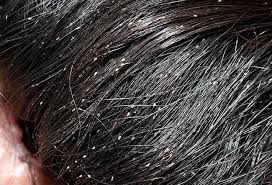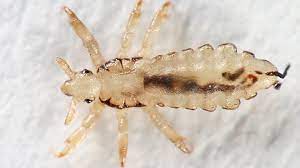It’s that time of year again- headlice are found in the heads of primary school children ( and older ones!) spreading to the wider family. Breastfeeding mothers can treat their children and themselves and continue to feed as normal.
Head lice are a common problem . Scratching the head is normally the first sign but eggs may be seen behind the ears and nape of the neck. The breastfeeding mother may need to apply preparations to her children and usually herself. Head lice are spread by head-to-head contact common between all mums and children as well as siblings and friends, not forgetting grandparents. Headlice are not a sign of poor hygiene and in fact they prefer clean hair.
Medicated lotions should not be used unless live lice are detected after 17 days regular combing.
Prevention is best achieved by regular combing with a fine-toothed comb. For further information see https://www.nhs.uk/conditions/head-lice-and-nits/ and https://www.chc.org/for-parents-2/ for a video.
Head lice may be mechanically removed by meticulous combing of wet, well-conditioned hair with a fine-toothed detection comb. Combing needs to be undertaken for at least 30 minutes at four-day intervals for a minimum of two weeks. Conditioner facilitates combing particularly of long hair. If there are still live headlice then suitable chemical treatment should be used.


Head lice are not a sign of poor hygiene and they actually prefer clean and shiny hair. Symptoms usually start with scratching the head and sometimes it feels like something is moving. The easiest place to find live head lice is behind the ears and at the nape of the neck.
Wet combing
It is possible to remove head lice without chemicals, but it takes time and patience. Wash the hair and leave in conditioner. Comb the hair with a fine comb thoroughly. It can take up to 30 minutes to do this so an ideal time is when the child is engrossed in a favourite TV programme. It is necessary to repeat this at least every 4 days ( https://www.nhs.uk/conditions/head-lice-and-nits/).
The charity Community Hygiene Concern has a video about wet combing for head lice. https://www.chc.org/for-parents-2/
Medicated lotions and sprays
These are available from pharmacies and supermarkets so there is no need to consult a doctor or practice nurse. Medicated products to treat head lice can be used by breastfeeding mothers to treat themselves and their children. If there are lots of heads to treat it can be sensible to have an open window as the smell can be strong. There is no evidence of absorption of the products into breastmilk through the skin, hair or scalp.
Shampoos are diluted too much in use to be effective. A contact time of 8–12 hours or overnight treatment is recommended for lotions and liquids. A 2 hour treatment is not sufficient to kill eggs.
In general, a course of treatment for head lice should be 2 applications of product 7 days apart to kill lice emerging from any eggs that survive the first application. All affected household members should be treated simultaneously. All friends and school should be advised so that all contacts can be treated to prevent reinfection. Regular wet combing to check hair of primary school age children is good practice (with the voice of experience as a mum and grandma!)
Products include ( not exclusive):
Dimeticone: Hedrin™, Lyclear Lotion™
Osmolone: Lyclear ™
Isopropyl Myristate: Vamousse
Permethrin: Lyclear cream rinse™
Cyclomethicone,Isopropyl Myristate: Full Marks™
Malathion: Derbac M™
References
•Ito S, Blajchman A, Stephenson M, Eliopoulos C, Koren G.Prospective follow-up of adverse reactions in breastfed infants exposed to maternal medication. Am. J Obstet Gynecol. 1993; 168:1393-9.
•Jones W Breastfeeding and Medication Routledge 2018
•Porto I. Antiparasitic drugs and lactation: focus on anthelmintics, scabicides, and pediculicides. J Hum Lact. 2003; 19:421-5.